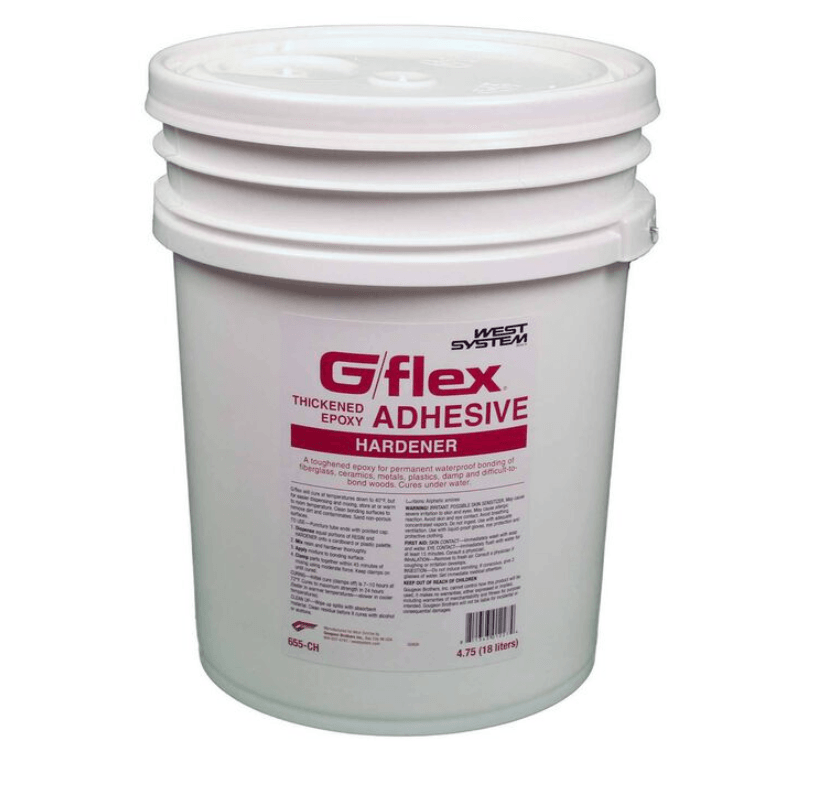
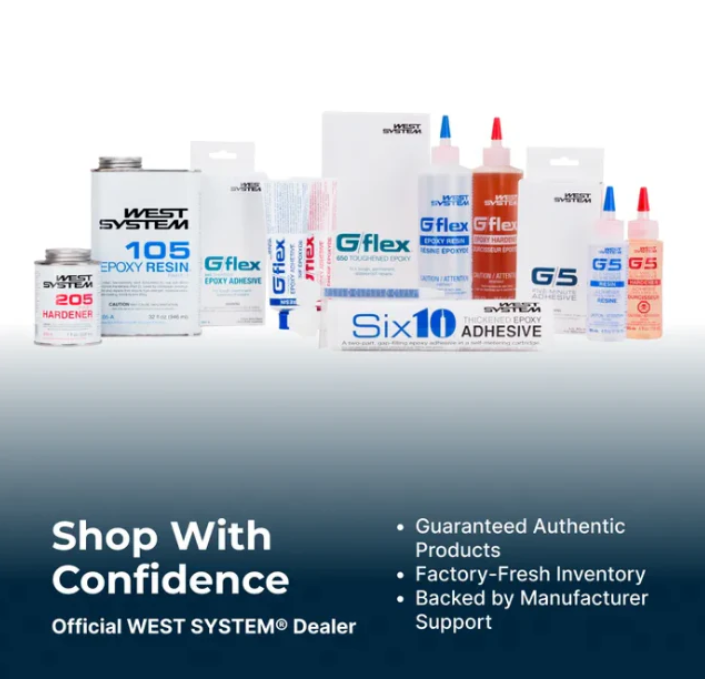
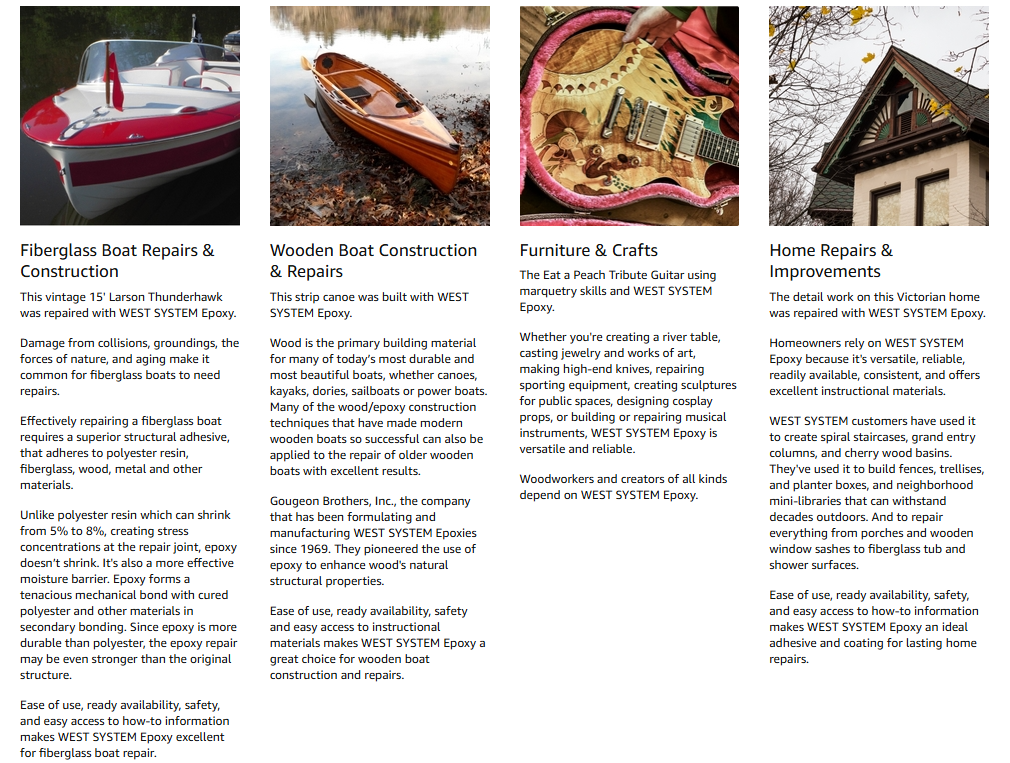
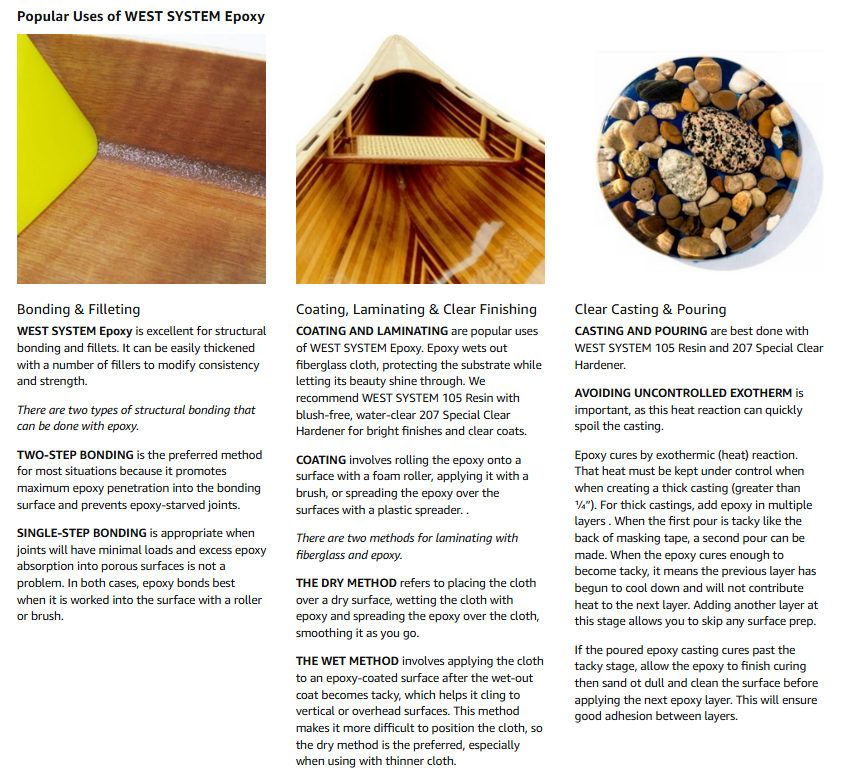
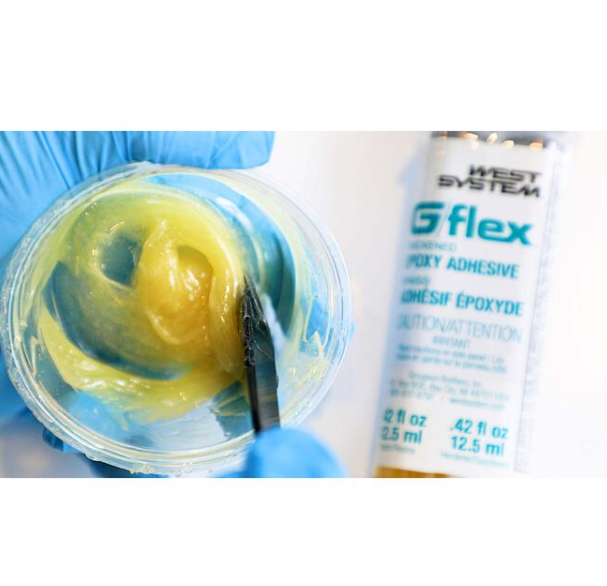
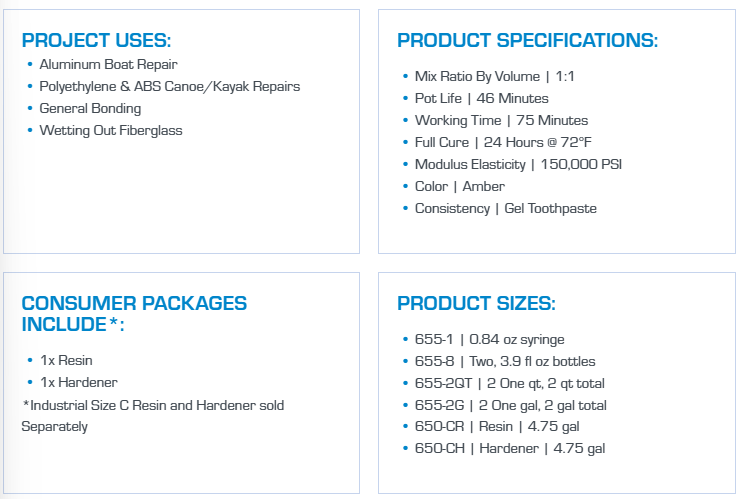


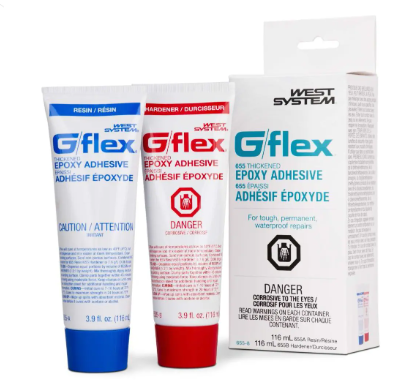
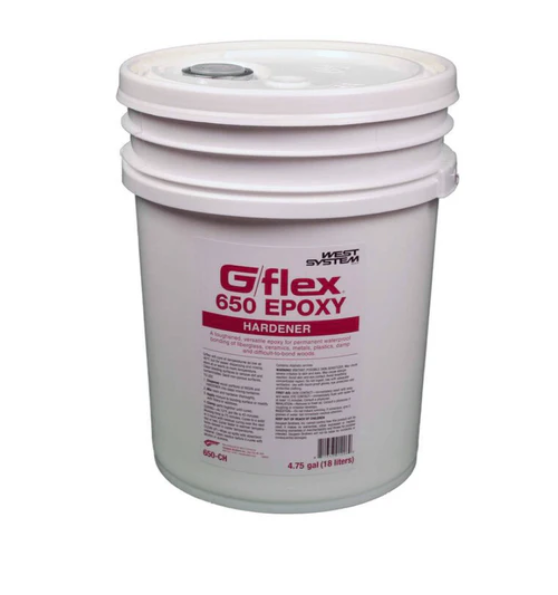

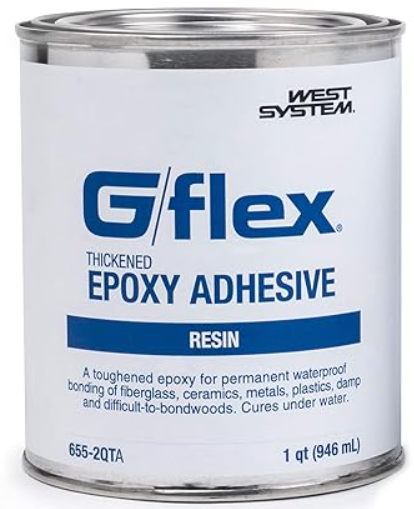
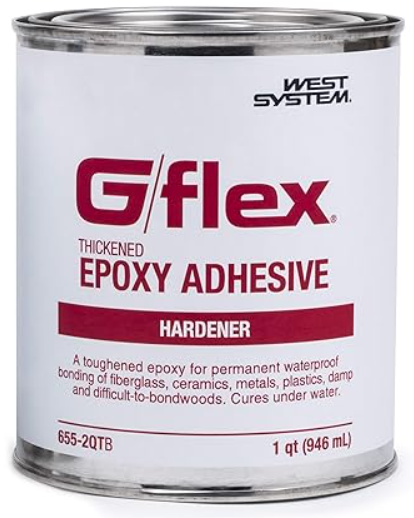
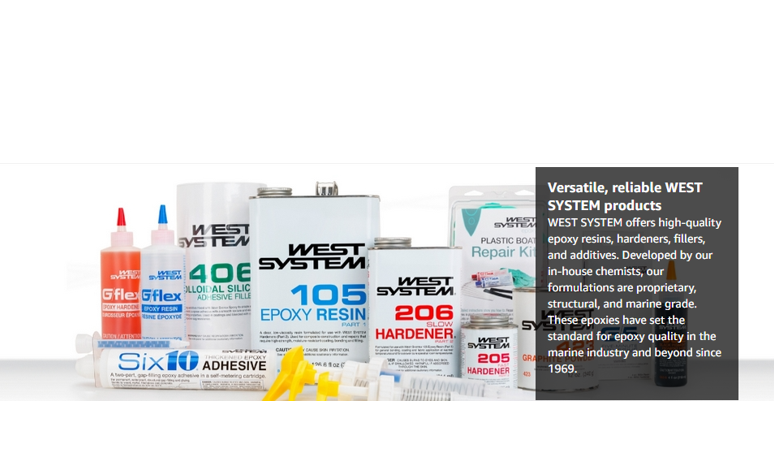
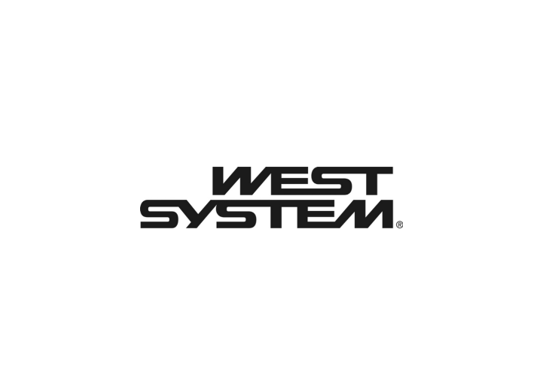
Product Description
G/Flex Epoxy Adhesive Hardener, 4.7 gallons (655-CH)
Model # 9681495
FREE Shipping
LOWEST PRICES GUARANTEED
Toughened, versatile, liquid epoxy resin for permanent bonding of fiberglass, ceramics, metals, plastics, damp and difficult-to-bond woods.
G/flex® Thickened Epoxy Adhesive is a toughened, versatile, 2-part epoxy for permanent waterproof bonding of plastic, fiberglass, ceramics, metals, damp, and difficult-to-bond woods. G/flex 655 is a bit more flexible than standard epoxies and polyester but much stiffer than adhesive sealants. This gives G/flex 655 the ability to make structural bonds that can absorb the stress of expansion, contraction, shock, and vibration. It is ideal for bonding dissimilar materials. This system is simple to use with its 1:1 mix ratio by volume.
DESIGNED FOR
- Plastics
- Metals
- Glass
- Masonry
- Fiberglass
- Wet and difficult-to-bond woods
PROJECT USES
- Aluminum Boat Repair
- Polyethylene & ABS Canoe/Kayak Repairs
- General Bonding
- Wetting Out Fiberglass
SPECIFICS
- Mix Ratio By Volume: 1:1
- Pot Life: 46 Minutes
- Working Time: 75 Minutes
- Full Cure: 24 Hours @ 72°F
- Modulus Elasticity: 150,000 PSI
- Color: Amber
- Consistency: Gel Toothpaste
DETAILS
- Best Use: Pre-Thickened Hardener for G/Flex 655 Resin
- Capacity: 4.7 Gallons
- Cure Time: 7 to 10 Hours (Working Time 75 Minutes) at 72 F
- Type: Hardener
SIZES
- 655-1 (0.84 oz syringe)
- 655-8 (Two, 3.9 fl oz bottles)
- 655-2QT (2 One qt, 2 qt total)
- 655-2G (2 One gal, 2 gal total)
- 650-CR (Resin, 4.75 gal)
- 650-CH (Hardener, 4.75 gal)
G/flex 655 Thickened Epoxy quickly builds up thickness and will not run or sag. It’s also toughened to make structural bonds that absorb the stresses of expansion, contraction, shock and vibration.
INCLUDES
- (1) 4.7 Gallon G/Flex Epoxy Hardener
All other WEST SYSTEM products are sold separately.
For the suitability of fillers for specific applications, see the Filler Selection Chart.
For more about 105 Epoxy Resin and the complete line of WEST SYSTEM products, see the Product Selection Guide.
Additional Info:
A Toughened Epoxy That's Flexible
G/flex® has been toughened. This gives it the ability to make structural bonds that can absorb the stresses of expansion, contraction, shock, and vibration. This epoxy is resilient and impact resistant. With a modulus of elasticity of 150,000 psi (WEST SYSTEM® 105 Epoxy Resin®/205 Fast Hardener® has a modulus of elasticity of 450,000 psi), G/flex is more flexible and can deflect further before breaking than WEST SYSTEM 105/205, while being much stiffer than typical adhesive sealants.
G/flex & Wet Surfaces
G/flex has the ability to glue damp woods. It can be used on wet surfaces, even underwater when applied with specific techniques.
Adhesion to Hard-to-Bond to Woods
G/flex adheres tenaciously to difficult-to-glue hardwoods, both tropical and domestic varieties such as white oak and ipe. This is important since many of the exotic and tropical species now being used to replace traditional woods present bonding challenges.
Bonding to Dissimilar Materials
G/flex is ideal for bonding a variety of materials, including dissimilar ones. It has a superior grip so that it can be used to bond to metals, plastics, glass, masonry, and fiberglass. This epoxy is ideal for repairs to aluminum boats and polyethylene and ABS canoes and kayaks. It can also be used to wet out and bond fiberglass tapes and fabrics.
Using G/flex
G/flex is a simple two-part epoxy system. Resin and hardener are mixed in a 1-to-1 mix ratio by volume. It provides a relatively long open working time, yet it cures quickly and can be used in cool temperatures. Because it is simple to mix and use, this 2-part epoxy is an excellent starting point for customers new to epoxy use.
Bonding Types
We often simplify adhesive bonds into two categories; primary bonds and mechanical bonds. Primary bonds occur when epoxy is applied to a previously applied layer of epoxy that has not been fully cured. The layers of adhesive will bond as if they were applied at the same time and mixed together. Mechanical bonds rely on the adhesion of the epoxy to a substrate. To visualize this, imagine the epoxy flowing into all of the imperfections and the sanding scratches of the substrate and locking into place. In reality, the forces are much more complex and beyond the scope of this article.
-
The fundamentals of achieving strong secondary bonds are the same whether the interatomic forces are understood or not. They include:
- Wet out the substrate. The epoxy must be able to flow and wet the surface. Surface contaminates can prevent this from happening.
- Let the epoxy cure in place. Clamps must remain in place and the joint can not be stressed until the epoxy cures.
- Use a high-strength epoxy. WEST SYSTEM® epoxy is a structural adhesive after it has been cured.
Tensile Adhesion of G/flex Epoxies
Tensile stress on an adhesive is created when a load is applied perpendicular to the surface. The stress generated by the load may cause an adhesion failure that is much lower than the actual tensile strength of the glue. Tensile adhesion value is not the same as tensile strength. WEST SYSTEM epoxy is formulated to have high tensile strength for applications such as creating a strong fiberglass laminate, and high tensile adhesion to common substrates for strong bonds. WEST SYSTEM G/flex® is formulated to achieve the highest adhesion values. The Tensile Adhesion for G/Flex Epoxies on multiple substrates can be compared with this chart.
Shop with Confidence! Official WEST SYSTEM Dealer
- Guaranteed Authentic Products
- Factory-Fresh Inventory
- Backed by Manufacturer Support

Not sure if we have this in stock? Call to check availability or use the Chat below!
TOP TESTIMONIALS
Safe payment on our website
- Choosing a selection results in a full page refresh.
- Opens in a new window.
















